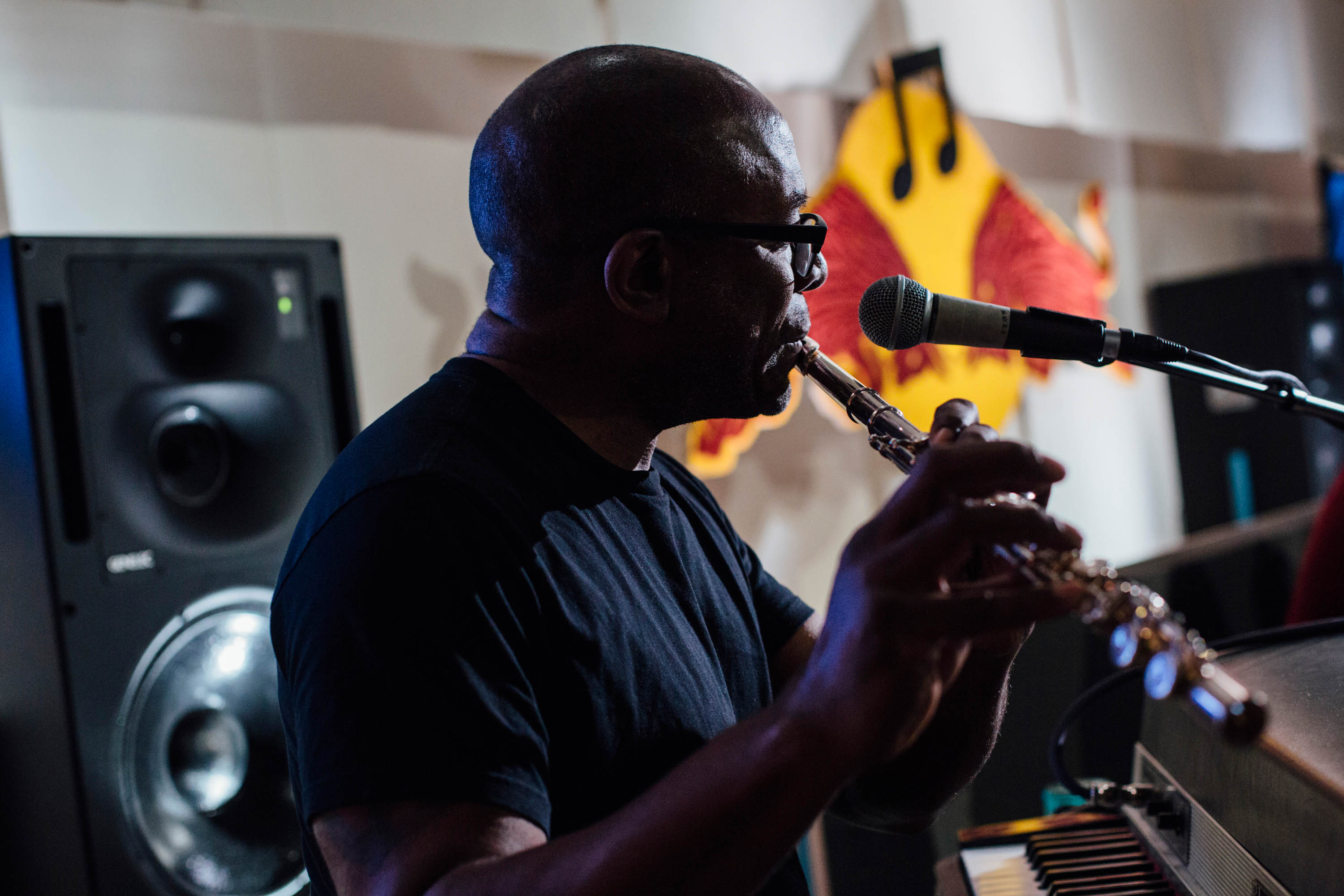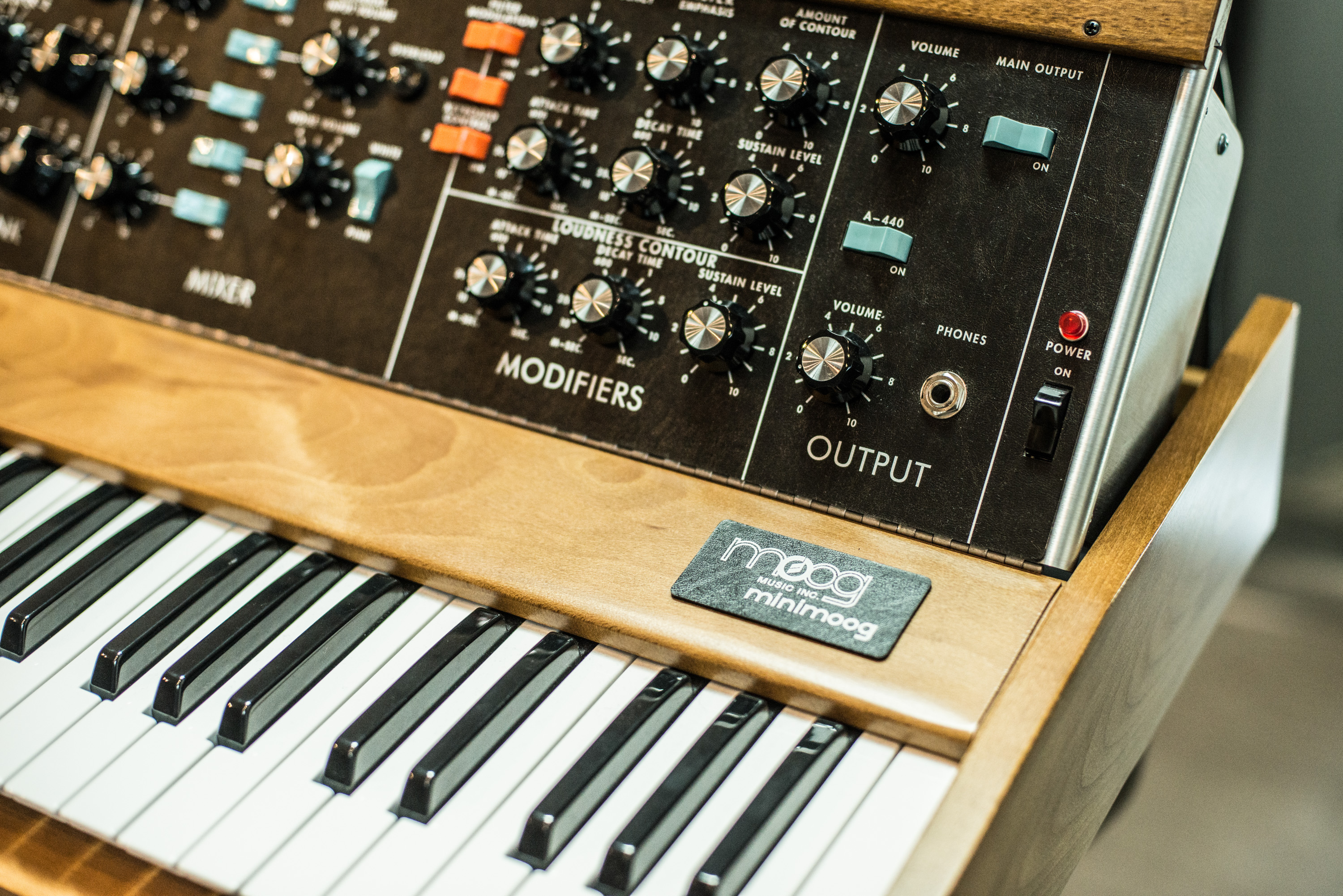Instrumental Instruments: Fender Rhodes
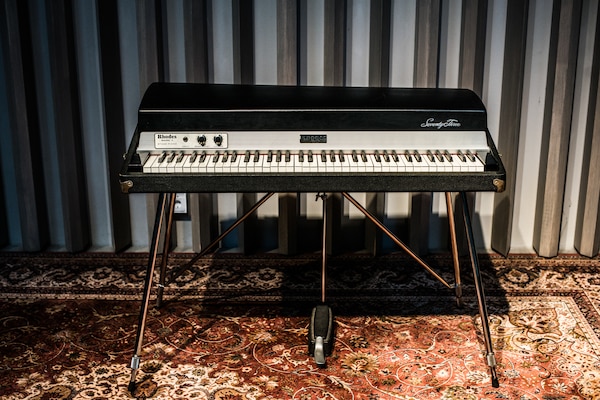
Our series on important music-making devices continues with the omnipresent electric piano
You’ve heard the Rhodes piano before, even if you didn’t realize what you were hearing at the time. Its electroacoustic timbre – somewhere between the heavy cream of an organ and the shimmer of chimes – has become ubiquitous over the years, deployed by artists such as Bill Evans, Herbie Hancock, Chick Corea, Ray Manzarek of the Doors, Donald Fagen of Steely Dan and Led Zeppelin’s John Paul Jones, but it can still sneak up on your ears. The Rhodes has a way of melting into the layers of a song, taking on different shapes depending on what instruments are being played along with it. According to its inventor, Harold Rhodes, his namesake instrument is meant to open up the ears of the person playing it, helping them understand its relationship to sound. That might mean holding down the bass or the rhythmic textures in the music, or going into outer space with the way the instrument’s resonance allows it to be modified and tweaked. The Rhodes exudes a warmth that can occupy many different spaces, and that’s not by accident: Though it has graced many a stage around the world in the last half-century, the Rhodes descends from a piano that was designed to be played in bed.
Born in 1910, Harold Rhodes was teaching piano in his native California before going into the Army Air Corps during World War II. It was then that he came up with the idea of an electric piano as a therapeutic instrument, building his initial prototype from airplane parts so that wounded soldiers would have a creative outlet while bedridden. He called his invention the Xylette, and the War Department liked it so much they drew up plans and manufactured it for him. His piano was meant for healing, and in that spirit Rhodes taught hundreds of thousands of GIs how to play it through a program called “Make And Play.” When he got out of the service, Rhodes went on to develop what he called the Pre-Piano, an appropriate name for what was the foundation of the design that would make his name synonymous with the electric piano.
Every Rhodes sounded different, and every musician got a different sound from it.
In 1959, Rhodes forged a partnership with electric guitar magnate Leo Fender, whose Stratocaster and Telecaster models were revolutionizing the burgeoning genre of rock & roll. The Fender Rhodes initially went into production as a bass piano known as the “Sparkle Top,” the first of its kind. Featuring the bottom 32 keys of a piano, it would go on to become the primary live bass instrument for the Doors. The Sparkle Top wasn’t the only model developed during the partnership between Fender and Rhodes, but it was the only one made available to the public: Despite the excitement of the collaboration, momentum stalled due to manufacturing problems.
CBS Instruments came along in 1965 and bought out Fender for an astronomical sum, keeping Rhodes on as a consultant. In the ensuing years, multiple versions of the Rhodes piano, still bearing the Fender Rhodes name, were put into production by CBS. The timing was right: The newfound availability of the Fender Rhodes, coupled with the experimental nature of the music of the late ’60s, got the piano into the hands of the musicians who would incorporate its sound into their own. For the most part, the action of a piano keyboard remained intact, but the possibilities that opened up because of the instrument’s electric pickups enabled a whole new generation of keyboard players. Every Rhodes sounded different, and every musician got a different sound from it, adding pedals, modulators and plenty of customized alterations to bend it to their will.
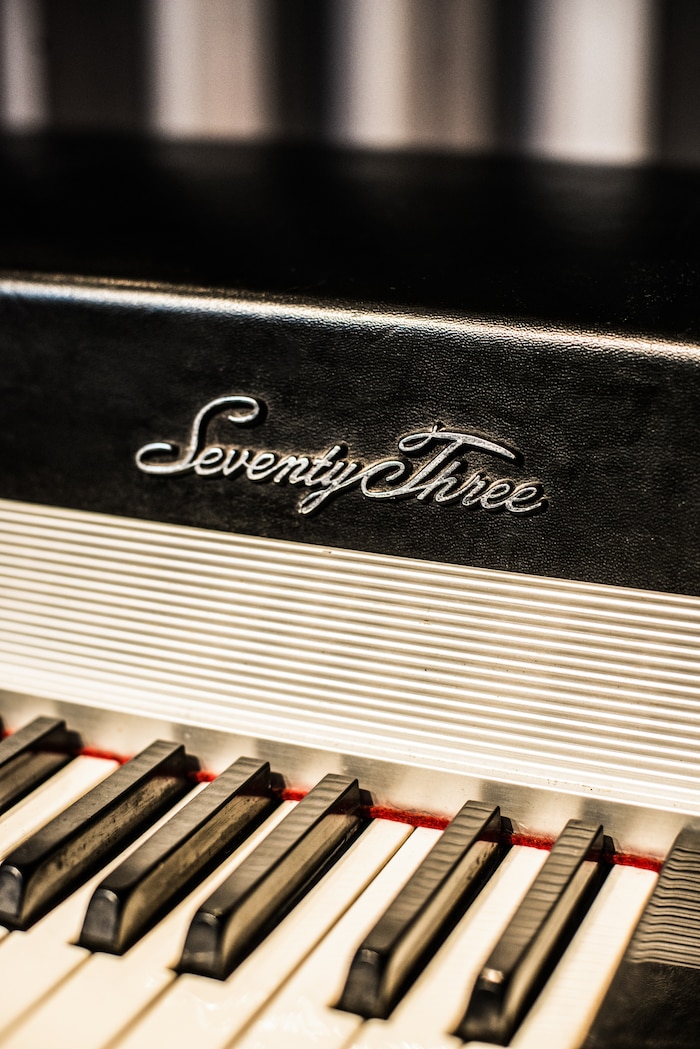
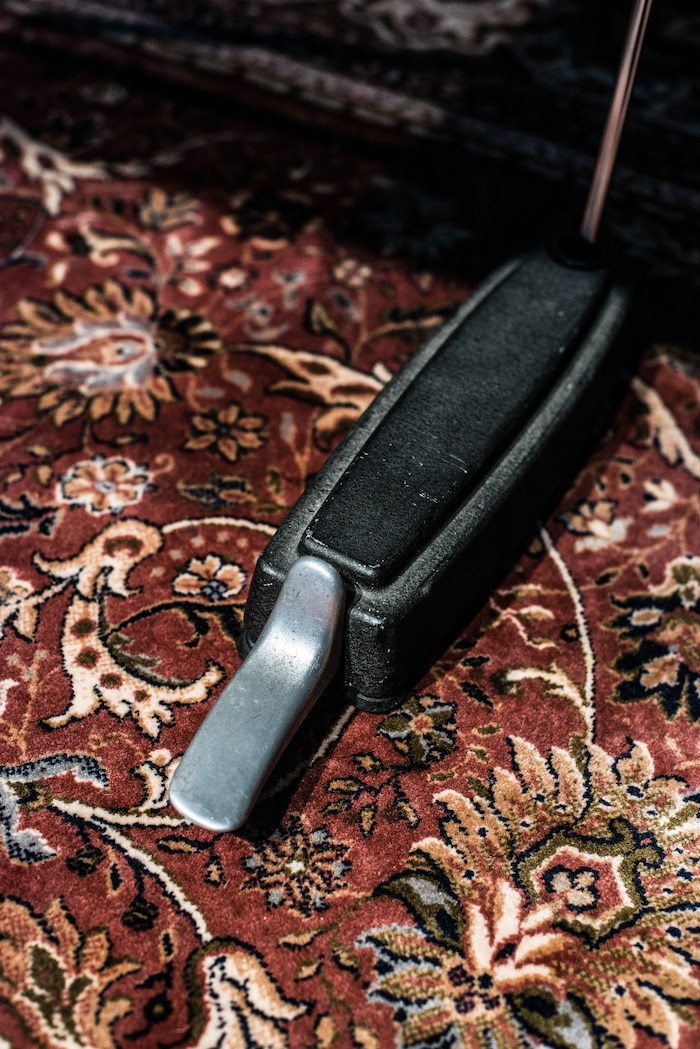
“When I think about what it is about the Fender Rhodes that appeals to me as a musician,” says Jamie Saft, a stalwart of contemporary New York’s downtown experimental scene, “as a keyboard player the Rhodes has such a beautiful sustain. All the other electric pianos – Wurlitzer – the note dies out pretty quickly, but Fender Rhodes will just sustain forever. It has this great bell-y, gling-y sound to it, and I just love that sound. Bill Evans used to combine it with acoustic piano, and those two sounds for me together was really an important sound. Also, Bitches Brew was big for the Fender Rhodes.”
It was the work of Miles Davis, on Bitches Brew and the records that preceded it, that introduced a wider audience to the Fender Rhodes, and it was Herbie Hancock and Chick Corea who played on those records. Hancock tells a story of going into the studio to record with Davis, asking where to find the piano and being directed instead to a Rhodes. It was the first time he ever played one, and he never looked back.
Overall, the 1970s would prove to be a rich decade for the Rhodes piano. It was the era of big studios, big labels and big budgets, and the Rhodes became the favored tool of many keyboard players of the era. Stevie Wonder made it a cornerstone of his sound, as did Keith Jarrett, Bob Marley and Bunny Wailer. Weather Report’s Joe Zawinul, George Duke and Ray Charles played the Rhodes, and it was a favorite of Paul McCartney, Chuck Mangione, and Billy Joel. Piano legend Bob James put it to work, too, and John Paul Jones famously took it into the wilds with Led Zeppelin’s 1973 epic “No Quarter.”
“The sound that came out was much bigger that I really expected to hear,” Herbie Hancock said on a Rhodes demo record from that same year. “It was much fuller, and it had a blending quality that the acoustic piano doesn’t have. The Rhodes Piano blends so well with other instruments, and I could hear myself much better!”
Hancock was a true pioneer of the Rhodes. He loved the vibrato effect built into early suitcase models, and the different modifications and effects he used – including the Maestro Echoplex – are still in use today. For many, his Rhodes sound is definitive of the instrument, but his modifications have inspired experimentation rather than emulation – and that was the idea. The Rhodes is meant to open up the sound around it, so that the person playing it is not just learning the instrument but learning how that instrument works within the greater context of music. That was how Harold Rhodes intended it to be used, and its design requires a unique touch from the person playing it because of the way sound travels from the inside to the ear.
Each individual Rhodes I feel like is its own person, its own personality.
The Rhodes is housed in a plywood case covered in a flexible vinyl material known as Tolex. Its metal legs are stored inside of the case in an interior compartment, which are removed and screwed into the bottom of the piano. There is also a sustain pedal stored in the case, which extends down to the floor in much the same way as pedals on a piano, and the sound from within comes from hammers striking electric tines. There are a number of different models, so while it doesn’t hold true for all of them, the basic concept is that the Rhodes Piano is not amplified. It creates its own soundwaves from the ringing of the tines inside of it, exuding an ambience that sounds like it’s both behind a wall and in outer space at the same time. You hear the texture of the keys and feel the way the sound determines the space between movements. The Rhodes demands you let it ring out. A piano player plays a Rhodes differently than a piano because the instrument sings differently – it’s a voice that can go underneath others or shine on its own. Like the piano, the Rhodes has 88 keys (though there are 73 key models as well), and it responds the most like a piano of anything else out there. Still, it’s a very different instrument.
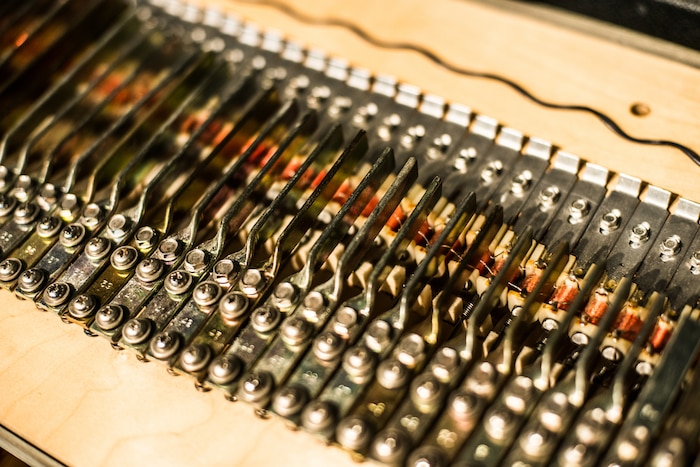
“If you’re sensitive to sound you can’t do the same thing on a Rhodes you do on a piano,” says New York jazz veteran John Medeski, who plays a 1973 Tremolo Rhodes Suitcase model. “The sound is everything, and each instrument, from piano to violin to French horn to Rhodes to pipe organ to electric guitar – they all have their own sound. Everything’s got its own sound, and that color informs that kind of music you make on it, and how you play it. So in the case of a keyboard, it’s what kind of voicings do you use? How do you fill out the harmonies? Because the overtone series of the instrument, it changes that. There’s a lot more overtones in a Rhodes. It’s less detailed. It’s fatter.”
Jimmy LaValle of the California band the Album Leaf plays a 1976 Mark I Stage model, an instrument he traded for after sitting down to play it in another musician’s studio almost two decades ago. He also spoke of the instrument’s voicings: “You’re probably hearing, too, just the way that it responds to your fingers. Because they’re all very unique. They all have their own tone and they all have their own sound. Each individual Rhodes I feel like is its own person, its own personality.”
“When I write songs sometimes,” says Kate Mattison of the Brooklyn band 79.5, “I don’t even know if this would make any sense to anybody, but I think of patterns and, like, an infinity sign. So I feel like I imagine an infinity sign right in front of my face, and I think, ‘Does it have that give and pull?’ You know what I mean? Like you’re going up the hill and then down and around and it just continues going and you get that momentum. I feel like the Rhodes – if you just play it, you can hear all those tones. You can see them going. That’s how I look at it, as if it envelops. There’s so many elements within the sounds that are coming out that are just taking over.”
As a pianist, you could never travel with your piano. But you could travel with your Fender Rhodes.
Though the Rhodes piano will forever be known as the Fender Rhodes, the Fender name was actually stripped from it in 1974. Many more versions were in production over the course of the 1970s, including a series of third-party, custom-modified pianos starting in 1978 called Dyno-My-Rhodes. Production finally stopped in 1984, when CBS sold the company and the Rhodes as we know it ceased to exist. In 1987, the electronics company Roland purchased the Rhodes name and developed digital versions called the MK-60 and MK-80, but they largely fell flat with musicians.
Having gone back to teaching piano in his later years, Harold Rhodes finally got the rights to his name back in 1996. He had plans to develop a newer version of his piano, but suffered a stroke that same year and went to live in a nursing home for the last four years of his life. Rhodes died in December of 2000, just short of his 90th birthday. He left behind a legacy with his pianos and his numerous acts of kindness (pianist Patrice Rushen tells a story of him selecting a Rhodes off the assembly line especially for her), but he was more proud of his method of teaching than any of his other awards or accomplishments.
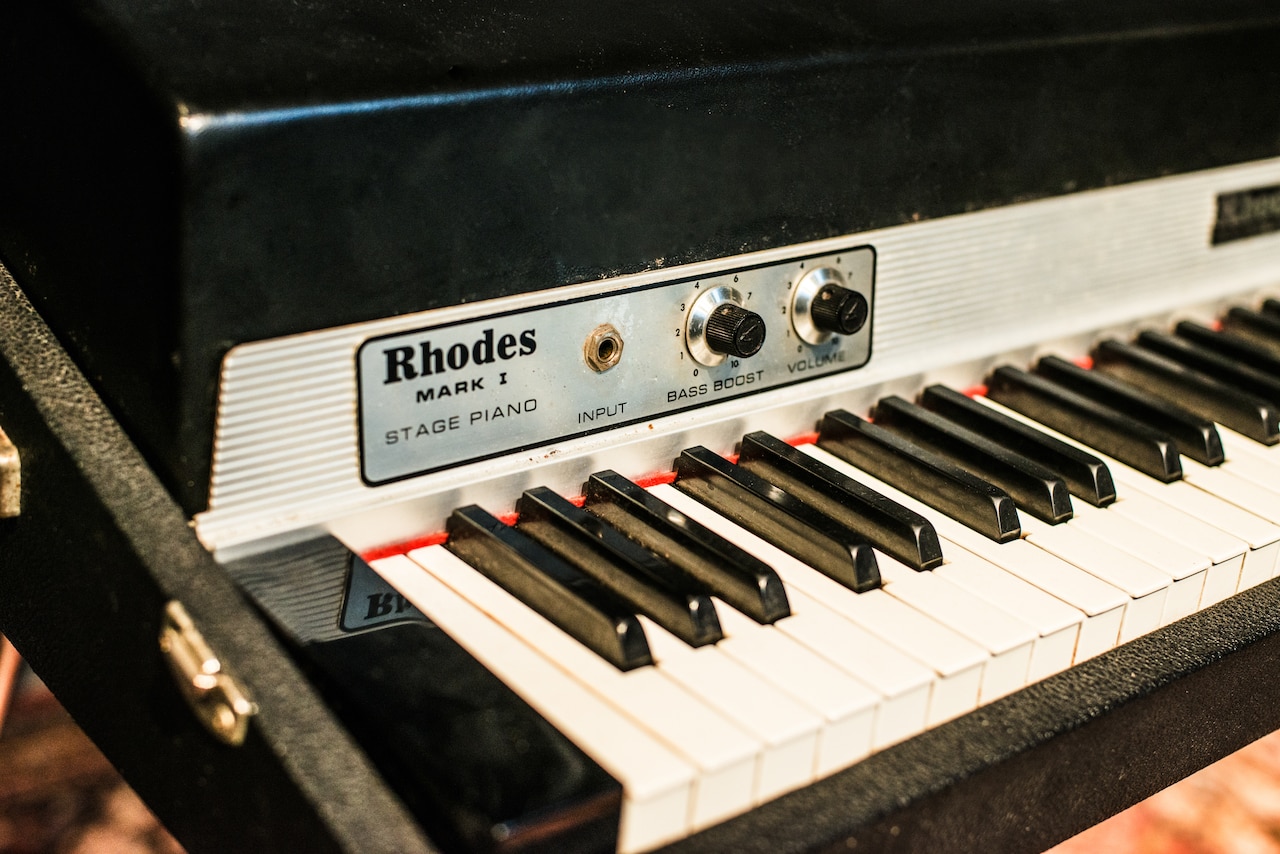
It was a friend named Joseph A. Brandstetter who had helped Rhodes wrestle his name back from the Roland Corporation, and it was Brandstetter who would eventually purchase the rights to the name from the Rhodes family in the interest of developing a new version of the Rhodes piano. The Rhodes Mark 7 was released in 2010, followed by the Rhodes RPC-1 the next year, with fiberglass taking over for the plywood found in the older versions and a MIDI functionality included – a feature that CBS had worked into a few super-rare models in the early ’80s. The Swedish keyboard company Clavia has also included a digital Rhodes emulator in its Nord Stage model, which is commonly used in place of the Rhodes for touring musicians, sometimes even housed in a Rhodes case to hide the fact that it’s a synthesizer in use – giving rise to the internet hashtag #NordShame.
The Rhodes piano also continues to surface in popular culture. Gerald McCauley’s book and documentary Down The Rhodes: The Fender Rhodes Story told the history of Harold Rhodes and his piano, and Adrian Younge and Ali Shaheed Muhammad’s score for the television show Luke Cage includes the character of Cottonmouth (played by Mahershala Ali) often sitting behind a Fender Rhodes when taking a break from his criminal empire. In the world of music, it’s the old versions of the instrument that live on, though, preserved by a never-ending guard of musicians keeping it alive in their songs.
“As a pianist, you could never travel with your piano,” says Saft. “But you could travel with your Fender Rhodes. Once you got one that played really nicely and you got it all voiced up, you could make incredible inspired music in the same way that you would with a world class piano and get an orchestral set of tones out of an instrument like a Fender Rhodes. So for me, I was very lucky to form a relationship with it early on in my musical development, and I’ve kept it as part of my main rig to this day.”
“It’s my sound,” says LaValle. “The way that my Rhodes sounds is my sound and the way that it responds to me is the sound, so if I would have a Mark II, and you get into the plastic hammers and where it’s like it cuts to plastic after the tone bar, it’s just a different sound immediately, and it just doesn’t respond the same. It doesn’t have the same attack. It doesn’t have the same brightness.”
Medeski says, “The truth is, at a certain point these instruments, they all have a certain genre – they’re genre signifiers, you know? The sounds. I mean, that’s what hip-hop really did. It shows us these sounds take you somewhere. But then they can be used in a new, creative way and reinvented through the music. You can’t play the same kinds of voicings that you can on piano on Rhodes. Because it’s thicker. But it changes no matter what you play, the sound of the instrument, and it does have this softness. It can really fit in. In a whole different way. It’s its own universe.”
The Fender Rhodes inspired new musicians to start playing because of its unique sound, but it also gave generations of piano players a new lease and a new means of expression through the same mechanics they were using to play the piano – and that has been the key to its longevity. The instrument’s enduring charm for musicians is perhaps best summed up by jazz great Les McCann, who in Down The Rhodes remembered once being told, “You’re great on that grand piano, but you’re a motherfucker on that Fender Rhodes!”
Header image © Kasia Zacharko
